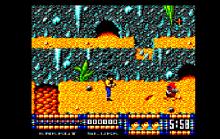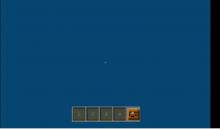Lemonade Stand
How to play Lemonade Stand
Each game uses different controls, Games can have combination of mouse,keyboard and Joystick.
Lemonade Stand Description
Lemonade Stand: A Classic Simulation Game That Defined Retro Gaming
The Lemonade Stand game is a nostalgic classic that introduced players to the basics of business management in the simplest, yet most engaging way. Originally developed for the Apple II in the late 1970s, this game simulates the challenges of running a lemonade business. Its straightforward gameplay and educational value have made it a timeless gem in the world of retro gaming.
Let’s explore the history, gameplay, and why the Lemonade Stand game continues to captivate players decades after its release.
The Origins of Lemonade Stand
The Lemonade Stand game was originally designed in 1973 and later gained widespread popularity when it was released for the Apple II by the Minnesota Educational Computing Consortium (MECC). MECC aimed to create educational games that were both fun and informative, and Lemonade Stand perfectly encapsulated this mission.

The game’s concept was simple: players manage a virtual lemonade stand by making decisions about pricing, inventory, and advertising. Despite its simplicity, Lemonade Stand introduced players to fundamental economic concepts like supply and demand, profit margins, and risk management.
How to Play Lemonade Stand: A Business Simulation Made Simple
In Lemonade Stand, players start each day by setting the price of their lemonade, deciding how much inventory to purchase, and choosing whether to invest in advertising. The weather forecast and other factors influence customer demand, requiring players to think strategically to maximize profits.
At the end of each day, players receive a report showing their sales, expenses, and profits. The goal is to grow your lemonade stand into a thriving business by making smart decisions.
Key Features of Lemonade Stand
The game’s charm lies in its simplicity, but it still offers engaging gameplay features:
- Dynamic Weather System: The game’s weather forecast impacts customer demand, forcing players to adapt their strategy daily.
- Budget Management: Players must balance expenses for ingredients, advertising, and pricing to ensure profitability.
- Educational Value: The game introduces players to basic business principles, making it both entertaining and informative.
- Replayability: Each session offers a unique experience, with varying weather conditions and customer behavior.
- Retro Graphics: The minimalistic design and text-based interface capture the essence of early computer games.
Play Lemonade Stand Online: Relive the Classic Experience
For those eager to revisit this classic, Lemonade Stand is available online through platforms like Classic Reload. These emulators faithfully recreate the original gameplay, allowing players to enjoy the retro experience on modern devices.

Whether you’re reliving childhood memories or discovering the game for the first time, playing Lemonade Stand online offers a delightful mix of nostalgia and strategy.
Why Lemonade Stand is a Timeless Classic
The enduring appeal of Lemonade Stand lies in its ability to teach and entertain simultaneously. Its simple mechanics make it accessible to players of all ages, while its focus on decision-making and strategy ensures a rewarding experience.
Here are a few reasons why the game remains relevant today:
- Simplicity: The game’s easy-to-understand mechanics make it perfect for casual gamers and younger audiences.
- Educational Impact: Lemonade Stand has been used in classrooms to teach basic economics and business skills.
- Nostalgia: For many, the game evokes fond memories of early computer gaming and the Apple II era.
- Replay Value: With changing weather patterns and customer behavior, no two games are ever the same.
Fun Facts About Lemonade Stand
- Early Beginnings: The game was one of the first widely distributed business simulation games, paving the way for future titles in the genre.
- Educational Focus: Lemonade Stand was designed to be both fun and instructional, making it a favorite among teachers.
- Minimalistic Design: The game’s simple text-based interface reflected the limitations of early computers but added to its charm.
- Global Reach: Despite its humble beginnings, Lemonade Stand became popular worldwide and inspired similar simulation games.
Mastering Lemonade Stand Strategy
To succeed in Lemonade Stand, players need to strike a balance between pricing, inventory, and advertising. Here are a few tips:
- Monitor the Weather: Adjust your pricing and inventory based on the daily forecast. Hot days usually bring more customers, while rainy weather reduces demand.
- Control Inventory Costs: Avoid over-purchasing supplies, as unused inventory doesn’t carry over to the next day.
- Experiment with Pricing: Find the sweet spot between attracting customers and maximizing profit.
- Use Advertising Wisely: Invest in ads when demand is likely to be high, but avoid overspending on slow days.
Access the Lemonade Stand Game Today
If you’re ready to dive back into this retro gem, you can play Lemonade Stand online via platforms like Classic Reload. With its timeless gameplay and educational value, this game remains a favorite for both nostalgic gamers and new players.
The Lemonade Stand game isn’t just a piece of gaming history—it’s a fun and engaging way to explore the basics of business. Whether you’re strategizing to beat the weather or balancing your budget, this classic game offers endless opportunities for learning and entertainment.
Takeaway
Lemonade Stand is a basic economics game created in 1973 by Bob Jamison of the Minnesota Educational Computing Consortium. Charlie Kellner ported the game to the Apple II platform in February 1979. Throughout the 1980s Apple Computer included Lemonade Stand (along with other software) with the purchase of their systems. Like most games created for microcomputers in the 1970s, the gameplay is simple. It simulates a child's lemonade stand, where choices made by the player regarding prices, advertising, etc. will determine the success or failure of the enterprise. The game owed its success to offering just enough variables to make a complex challenge for users, but still providing a simply-grasped addictive introduction to the offsetting priorities facing a business. The choice of the right prices and quantities on the day of a heat-wave could instill the intense satisfaction unique to a greatly profitable private enterprise.
The player is first given a weather report for the day (sunny, cloudy or hot and dry, each accompanied by a color drawing) and is prompted for three values: The number of glasses of lemonade to make, the number of advertising signs, and the cost of lemonade per glass. The program then gives a report of the earnings for that day. A thunderstorm, sometimes occurring on cloudy days and accompanied by a color animation, will void any profits and cause the player to lose any investment for the day. The game can be played either single-player or with up to 30 players (each player is independent and the sales of one do not affect another). The Apple II version included music, with bars from "Singin' in the Rain" and "Summertime" played at appropriate moments.

Lemonade Stand - additional information
















